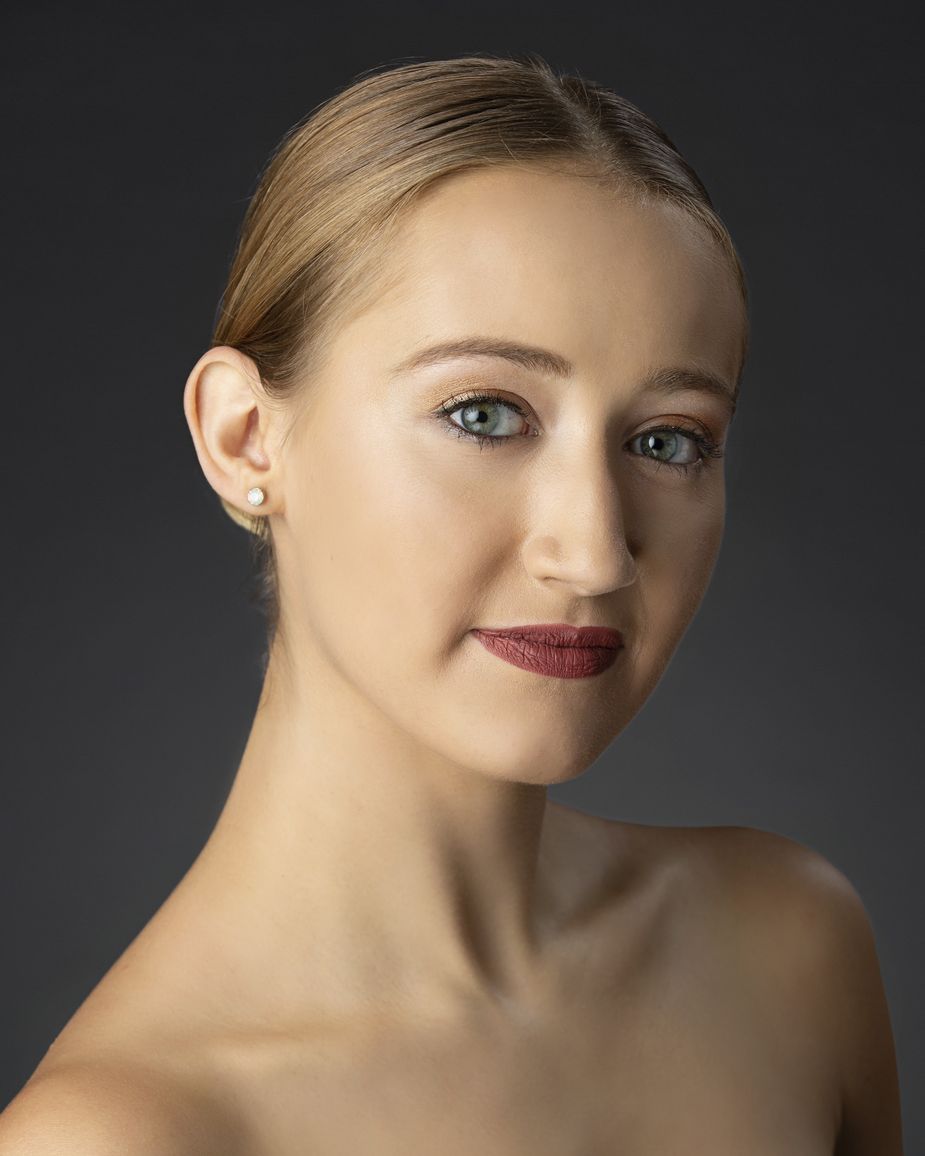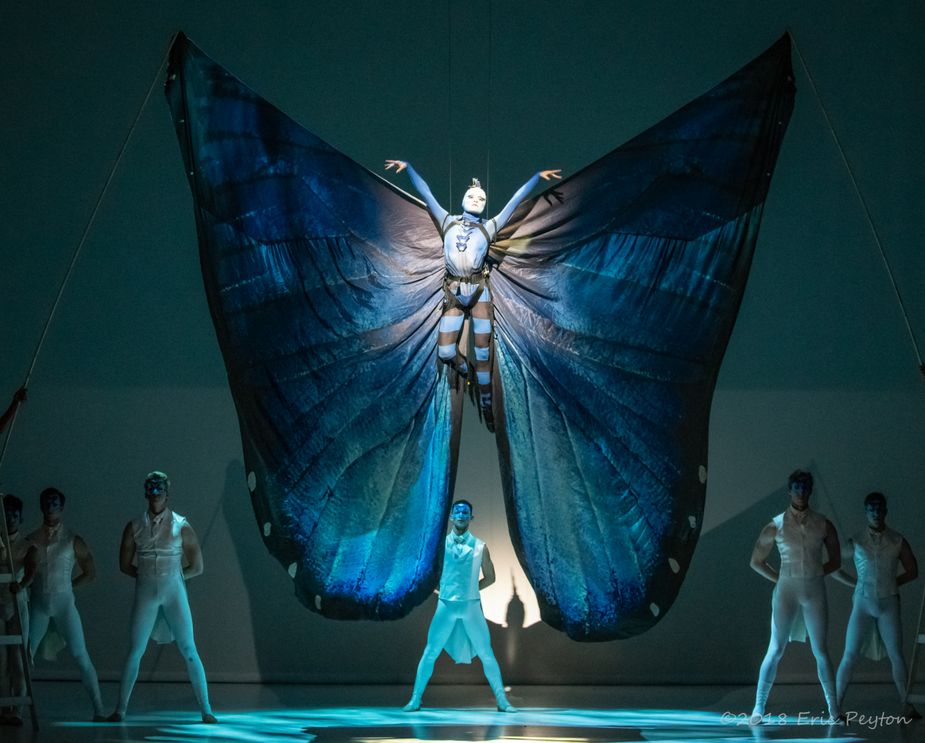Behind the Looking Glass, Act II: The Flowers Come to Life
Published October 2021
By Karlie Ybarra | 10 min read
Click here to read Behind the Looking Glass, Act I.
As any gardener can tell you, the best laid plans (or plants, as it were) don’t always work out the way they’re supposed to. It’s possible to pick the perfect arrangement of seeds, making sure that nothing will compete for resources; to choose the best possible soil and setting; to provide adequate lighting, water, and fertilizer, only to reap a harvest of disappointment at the end of the season.
While Alice (in wonderland) audiences will no doubt be enraptured by all of the dazzling elements the show brings together, ultimately, it falls to the dancers to embody the characters—to make them so real that the line between reality and fantasy becomes indistinguishable. That task is particularly daunting when that cast of characters includes flowers, birds, a devious disappearing feline, a caterpillar under the influence, and many more roles that are outside of the usual human experience. Then there’s the pressure to honor such a beloved classic. Not to mention the fact that each step must be flawless, each line the dancers create with their bodies the epitome of grace—for nearly two hours. This sounds like a reasonable task, if you have a year or two to prepare. The Oklahoma City Ballet crew has just over a month.

Wonderland is full of colorful characters, and each presents an array of new challenges for the Oklahoma City Ballet dancers to embody. Photo by Aaron Gilliland
Act II: The Flowers Come to Life
For the dancers of the Oklahoma City Ballet, once the season starts in August or September, the pirouettes of progress start turning immediately, and there’s no slowing down.
“It’s a full schedule as soon as we get back,” says Alexandra Schooling, a member of the corps de ballet who joined the Oklahoma City company in 2016. “Right out of the gates, it’s very important that we come back in shape. Then there’s at least a month, if not longer, of maintenance classes.”

Alexandra Schooling dreamed of being a ballerina growing up in Lancaster, Pennsylvania, even wearing a tutu to the grocery store on occasion as a little girl. Photo by Shevaun Williams
Though theirs is more physically demanding than most occupations, the dancers typically for are on the job more than forty hours a week.
“It’s Monday through Friday, nine to five,” says Kara Troester Blythe, also a part of the corps de ballet who joined the company in 2017. “I think most people don’t realize it’s a full-time job. And most of the time, we all get here at least an hour early, and then there’s our outside work.”

Kara Troester Blythe, an Oklahoma City native, has portrayed many roles during her four years with the Oklahoma City Ballet, but she considers her time as a vampire during the 2019 production of Dracula to be one of her most fulfilling experiences. Photo by Shevaun Williams
As they prepare their bodies for feats of extraordinary strength and elegance, the dancers also must ready themselves mentally for the challenge of learning and perfecting their steps at break-neck speed. For the first performance of Alice on Friday, October 22, répétiteur Johanna Wilt started teaching the choreography on September 20.
“We get into the studio and Johanna just gives us choreography for an hour, or more, straight,” Troester Blythe says. “You have to learn really quickly, and we get to do it maybe once and then move on, especially with this shorter rehearsal schedule. Since it’s such a long and intricate ballet, there are a lot of details we need to understand.”
Not only does each show have a complicated arrangement to memorize, but each répétiteur has his or her own method, which the dancers must learn to embrace as well.
“It’s one of my favorite parts of the process, actually,” Schooling says. “All of the people who come in to set various ballets have their own sort of language—a map of the patterns, the lines, and the steps. And it’s all in a big binder, every account of every person.”
“She has that for herself, but she’s also pulling us around,” Troester Blythe adds. “Showing us ‘you stand here, and you stand here.’ It’s totally different for each setter.”
Two more things that make this a particularly difficult production: the fact that many dancers take on multiple roles and the massive ensemble scenes. Schooling and Troester Blythe must face both, since the former is playing a twin, a rose, and a flamingo, while the latter is portraying a rose and a flamingo. And bringing those flamboyant birds into sync is no small feat.

Ballet aficionados will love the flamingo segment in particular. It's influenced by Swan Lake, which makes it beautiful and incredibly difficult to execute. Photo by Eric Peyton
“Once we have the big picture put together, we have to fill in the rest of the puzzle,” Troester Blythe says. “And then we just run it, especially the harder sections. The flamingoes is a really big section. It’s styled off of Swan Lake, so it’s super core heavy and really stamina driven. We need to do it every day to keep up our stamina.”
To top it all off, many of the dancers—including the roses and flamingoes—have to jeté and chassé around the stage while wearing beaks, petals, rabbit ears, and other large headpieces.
However, that’s nothing compared to the mental challenge of preparing for opening night, especially with only five weeks of rehearsal. A ballet like Alice is obviously physically demanding, but it also requires a strong will to step into the spotlight and give the audience all of your heart.
For Schooling, that involves a moment of zen before she arrives at the theater to zone out and get into her body, whereas Troester Blythe has her own path to calm before the storm.

A typical ballet has difficult choreography to learn. Alice (in wonderland) requires dancers to master their steps on stage and in the sky as they perform literal acrobatic feats at the Civic Center. Photo by Eric Peyton
“I have a long drive, so sometimes I’ll just turn the music off, drive in silence, and just take a moment to breathe,” she says. “We all have something, some sort of meditation that helps us get into the right mindset.”
For most people, the idea of even stepping foot on a stage in front of a crowd of thousands is petrifying. But the Oklahoma City Ballet dancers are courageous, talented, and absolute professionals. They also inspire one another to be better.
“Once we get to the theater, everyone’s energy is up, and people are cheering each other on,” Schooling says. “It’s like ‘It’s showtime, baby!’”
Check back next week to read Act III: In Full Bloom, the final installment in this series in which I finally get to the show.
Ready to get tickets for Alice (in Wonderland)? Click here.







